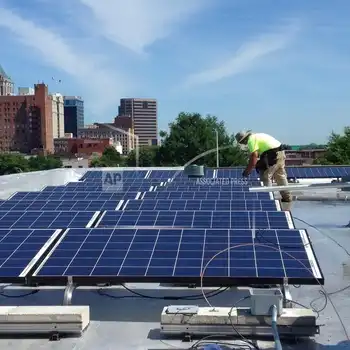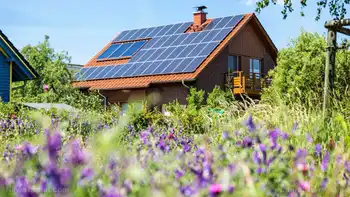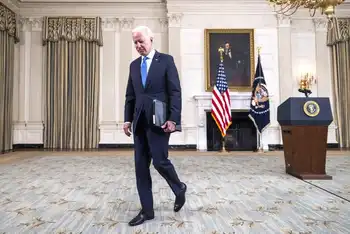2016 a Record Year for Renewables, Latest IRENA Data Reveals
NFPA 70e Training
Our customized live online or in‑person group training can be delivered to your staff at your location.

- Live Online
- 6 hours Instructor-led
- Group Training Available
Renewable Energy Capacity Statistics 2017 highlights a record 161 GW added in 2016, as solar, wind, hydropower, bioenergy, geothermal, and off-grid systems expand worldwide, with Asia leading growth, per IRENA.
Key Points
IRENA's report detailing 2016 renewable capacity growth, totaling 2,006 GW globally and 161 GW in new additions.
✅ Record 161 GW added; total capacity reached 2,006 GW (+8.7%).
✅ Solar +71 GW outpaced wind (+51 GW); hydro +30 GW; bioenergy +9 GW.
✅ Asia led 58% of additions; off-grid reached 2,800 MW.
Global renewable energy generation capacity increased by 161 gigawatts (GW) in 2016, making the strongest year ever for new capacity additions with record-shattering renewables globally, according to data released today by the International Renewable Energy Agency (IRENA). Renewable Energy Capacity Statistics 2017, estimates that by the end of last year the world's renewable generation capacity reached 2,006 GW, with solar energy showing particularly strong growth.
"We are witnessing an energy transformation taking hold around the world, and this is reflected in another year of record breaking additions in new renewable energy capacity," said IRENA Director-General
Adnan Z. Amin. "This growth in deployment emphasizes the increasingly strong business case for renewables, highlighted by milestones such as a U.S. renewables milestone in recent years, which also have multiple socio-economic benefits in terms of fueling economic growth, creating jobs and improving human welfare and the environment. But accelerating this momentum will require additional investment in order to move decisively towards decarbonising the energy sector and meet climate objectives. This new data is an encouraging sign that though there is much yet to do, we are on the right path,"
Mr. Amin added.
IRENA's new data shows that last year's additions grew the world's renewable energy capacity by 8.7 per cent, with a record 71 GW of new solar energy leading the growth. 2016 marked the first time since 2013 that solar growth outpaced wind energy, with wind power in 2016 increasing by 51 GW, while hydropower and bioenergy capacities increased 30 GW and 9 GW respectively --the best ever year for growth in bioenergy capacity. Geothermal energy capacity increased by just under 1 GW.
Asia accounted for 58 per cent of new renewable additions in 2016, according to the data, giving it a total of 812 GW or roughly 41 per cent of the global capacity. Asia was also the fastest growing region, with a 13.1 per cent increase in renewable capacity. Africa installed 4.1 GW of new capacity in 2016, twice as much as 2015.
This year's edition of Renewable Energy Capacity Statistics contains for the first time data specifically for off-grid renewables. IRENA shows that off-grid renewable electricity capacity reached 2,800 megawatts (MW) at the end of 2016. Roughly 40 per cent of off-grid electricity was provided by solar energy and 10 per cent from hydropower. The majority of the remainder came from bioenergy. It is estimated that globally as many as 60 million households, or 300 million people, are served with and benefit from off-grid renewable electricity.
Highlights by technology:
Hydropower: In 2016, about half of new hydro capacity was installed in Brazil and China (14.6 GW in total). Other countries with major hydro expansion (over 1 GW) included: Canada, where renewable policy shifts framed growth, Ecuador, Ethiopia and India.
Wind energy: Almost three-quarters of new wind energy capacity was installed last year in just four countries: China (+19 GW); USA (+9 GW); Germany (+5 GW); and India (+4 GW). Brazil continued to show strong growth, with an increase of 2 GW in 2016.
Bioenergy: The majority of bioenergy capacity expansion occurred in Asia last year (+5.9 GW) and Asia is fast approaching Europe in terms of its share of global bioenergy capacity (32 per cent compared to 34 per cent in Europe). Europe (+1.3 GW) and South America (+0.9 GW) were the other two regions where bioenergy capacity expanded significantly.
Solar energy: Asia saw the most growth in solar capacity last year, with capacity of 139 GW (+50 GW). Almost half of all new solar capacity was installed in China, reflecting China solar PV growth in 2016 (+34 GW). Other countries with significant expansion included: the U.S. solar market adding +11 GW, Japan (+8 GW) and India (+4 GW). Capacity in Europe expanded by 5 GW to reach 104 GW, with most expansion occurring in Germany and the UK.
In Europe, Ireland's green electricity target aims for more than a third of power to be renewable within four years, underscoring regional momentum.
Geothermal energy: Geothermal power capacity increased by 780 MW in 2016, with expansions in Kenya (+485 MW), Turkey (+150 MW), Indonesia (+95 MW) and Italy (+55 MW).
Renewable Energy Capacity Statistics 2017 offers the most comprehensive, up-to-date and accessible figures on renewable energy capacity statistics. It includes figures from 2000 to 2016, and contains data from more than 200 countries and territories.















